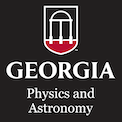Ultrafast spectroscopy continues to be a powerful tool for observing dynamics in quantum mechanical systems on the femtosecond timescale, a chemically important time window corresponding to molecular vibrations and many electronic transitions. Exploiting the characteristics of frequency comb lasers, we develop new techniques to overcome limitations of current methods of ultrafast spectroscopy. Frequency combs were developed as a tool for metrology and their use for precision spectroscopy has been widely recognized. However, the utility of a frequency comb for ultrafast spectroscopy is not as obvious. We exploit the properties of frequency combs to improve the sensitivity and broadband detection of ultrafast spectroscopies. One such technique we are developing uses ultrafast fiber-laser frequency combs coupled to external enhancement cavities to increase the sensitivity of ultrafast transient absorption spectroscopy. The enhancement cavities increase the laser power and effective absorption path length, thus giving signal enhancements of several orders of magnitude over traditional transient absorption spectroscopy. Noise reduction techniques improve the sensitivity of transient absorption by more than four orders-of-magnitude over previous best techniques. We can now study dilute samples in molecular beams on the femtosecond timescale with transient absorption spectroscopy, opening up new areas of chemical research. I will discuss this technique and others we are developing that use frequency combs to make significant improvements in ultrafast spectroscopies.
Events Calendar View
-
Departmental Colloquium
Aug 23, 2018
Ultrafast Spectroscopy with Frequency Combs: the What, Why, and How
-
CSP Lunch Seminar
Aug 28, 2018
A Histogram-Free Monte Carlo Algorithm to Obtain the Density of States
-
Departmental Colloquium
Aug 30, 2018
Improving Stroke Treatment by Magnetic Nanomotors
The treatment of ischemic stroke remains a daunting task as few therapeutic strategies have proven to be effective. Systemic thrombolysis with intravenous tissue plasminogen activator (tPA) remains the only proven treatment to improve clinical outcome of patients with acute ischemic stroke. But because of an increased risk of hemorrhage beyond 4.5 hours after onset of stroke, only certain stroke patients (1-2%) can benefit from tPA treatment. Current limitations of intravascular thrombolysis are primarily due to the inefficient/ineffective penetration of the systemically circulating tPA into the thrombus core. To improve tPA-induced thrombolysis and recanalization rates, we have developed a new strategy by incorporating rotary magnetic iron oxide (Fe3O4)-nanorods powered by an external magnetic field with the tPA delivery. Once the nanorods encounter the blood clot in the artery, it could not only improve the mass transport of the tPA-clot reaction, but also could mechanically disrupt the clot network to make a larger opening in the clot. Additionally, when magnetic nanorods are covalently bound to tPA with retained enzyme activity, the tPA functionalized magnetic nanorods can target to the blood clot in vivo under the guidance of an external magnet and tPA can subsequently be efficiently delivered at the site of embolism at high concentration to facilitate thrombolysis. Thus, an efficient tPA delivery system to the brain in combination with magnetic nanorods overcomes the limitations of current therapy with tPA alone. In a mouse model, we show that with two orders of less concentration of tPA on tPA-magnetic nanorod injection, it takes less than 1/3 time to lyse the blood clot, compared to that of tPA injection alone. In this talk, I will discuss the synthesis, functionalization of the magnetic nanorods, the physical and chemical mechanism of the improved thrombolysis, and the results from both the in vitro and animal tests as well as future challenges.
-
Applied Physics Seminar
Aug 31, 2018
Physical Principles of Brain Folding: Computational Modeling and Data Interrogation
Recent years have witnessed the explosive growth of interests in the health-related research from the computational modeling and data interrogation perspectives. In this talk, I would like to take the brain folding as an example to discuss the role of computational modeling in explaining the physical formation of complex brain structure. Via computational modeling and data analysis, we demonstrate that, in additional to biological cues, physical factors such as cortex stiffness, thickness, and growth speed may play crucial roles in brain gyral formation and functionality. Our findings may provide a plausible avenue to describe the relationships amongst cortical morphology, connection, and function, thereby offering clues towards novel diagnostics and treatments of neurological disorders.
-
CSP Lunch Seminar
Sep 4, 2018
Career Center Resources for Students
-
Departmental Colloquium
Sep 6, 2018
Phonon-photon entanglement in WSe2 quantum dots
Monolayer transition metal dichalcogenides (TMDs), such as WSe2, are atomically thin semiconductors with a "valley" degree of freedom, which can be optically addressed, thus opening up exciting possibilities for "valleytronics". Recently, naturally occurring single quantum emitters, believed to be excitons trapped in shallow potentials, were reported in TMDs. They seem to inherit the valley degree of freedom from the host TMD and owing to their longer lifetimes, appear promising for quantum information processing applications.
In this talk, I will begin by highlighting some unique properties of TMDs excitons which result from the off-Gamma-point origin of the constituent single particle electronic states. After describing the basic properties of quantum dots in TMDs, I will present evidence for quantum entanglement between chiral phonons of the 2D host and single photons emitted from the quantum dots. Finally, I will discuss our future plans for implementing a dynamically tunable array of qubits in pristine TMDs which can serve as an ideal platform for quantum information processing applications and also for understanding fundamental many-body physics.
Page 83 of 121, showing 6 records out of 723 total, starting on record 493, ending on 498


